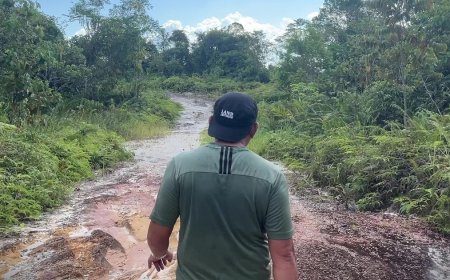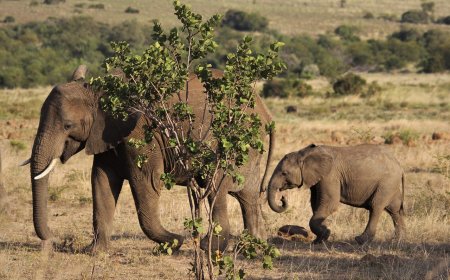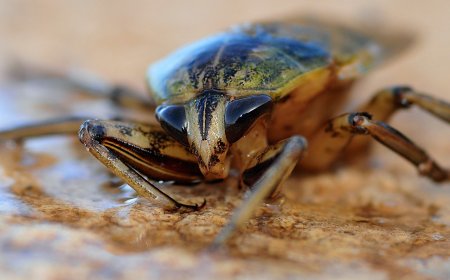Animal life in danger across the planet
The challenges some species face are complex, requiring a combination of habitat preservation, anti-poaching measures, and community involvement to address the root causes of their decline.

Unfortunately, many species are facing the threat of extinction. Some of the most critically endangered species include the African elephants, Javan rhinoceros, northern white rhinoceros, and the Sumatran orangutan. It's a pressing issue, and conservation efforts are crucial to protect these species and their habitats.
The current rate of species extinction is significantly higher than the natural background rate. Human-induced factors, such as habitat destruction, overexploitation, and climate change, are major contributors to the accelerated loss of biodiversity.
Let's take a look of the problem in the different continents and also in the oceans.
Africa
In Africa, several species are also facing significant threats to their survival. Some notable examples include:
- Mountain Gorilla: The mountain gorilla, found in the Virunga Mountains and Bwindi Impenetrable National Park, has faced threats from habitat loss, poaching, and political instability in the region. Conservation efforts, including ecotourism and anti-poaching initiatives, have helped stabilize their populations, but they remain endangered.
- African Elephant: African elephants, particularly the forest elephant and the savanna elephant, are under threat from poaching for their ivory, habitat loss due to human activities, and human-wildlife conflicts. Conservation efforts focus on anti-poaching measures, habitat protection, and community engagement to promote coexistence.
- Black Rhinoceros: The black rhinoceros has faced severe population declines primarily due to poaching for their horns, which are highly valued in some traditional medicine practices. Conservation programs involve intensive anti-poaching efforts, habitat protection, and community involvement.
- Cross River Gorilla: The Cross River gorilla is a critically endangered gorilla subspecies found in the border region between Nigeria and Cameroon. Their population is threatened by habitat fragmentation, hunting, and agricultural expansion. Conservation initiatives aim to protect their remaining habitats and mitigate human-gorilla conflicts.
Efforts to conserve African wildlife involve a combination of law enforcement, community engagement, habitat preservation, and international cooperation to address the complex challenges these species face. Conservation organizations and governments are working together to secure a future for these iconic African species.
America
North and South America are home to diverse ecosystems with a range of species facing various threats. Here are some examples:
-
Mexican Wolf: The Mexican wolf, a subspecies of the gray wolf, is critically endangered. Conservation efforts involve reintroduction programs in the southwestern United States and Mexico, as well as measures to address human-wolf conflicts.
-
California Condor: The California condor is one of the rarest birds in North America. Conservation efforts include captive breeding programs and reintroduction efforts to increase their population.
-
Sea Otter: Sea otters along the Pacific coast face threats from pollution, oil spills, and entanglement in fishing gear. Conservation measures involve habitat protection and efforts to reduce human impacts on their environment.
-
Florida Panther: The Florida panther is a subspecies of cougar and is critically endangered. Habitat loss, vehicle collisions, and genetic issues due to a small population size are major concerns. Conservation efforts include habitat preservation and efforts to reduce human-wildlife conflicts.
-
Amazon River Dolphin (Boto): Amazon river dolphins are threatened by habitat degradation, pollution, and accidental capture in fishing gear. Conservation efforts include habitat protection, research, and community-based initiatives to reduce human impacts.
-
Jaguar: Jaguars face habitat loss, poaching, and conflicts with humans in parts of their range. Conservation measures involve creating protected areas, combating illegal wildlife trade, and promoting coexistence between jaguars and local communities.
-
Mountain Tapir: The mountain tapir is found in the Andes and is threatened by habitat loss and hunting. Conservation efforts include establishing protected areas and corridors, as well as community engagement to promote conservation.
-
Green Sea Turtle: Green sea turtles nest on the coasts of South America, and their populations face threats from habitat destruction, poaching, and climate change. Conservation efforts include protecting nesting sites, implementing sustainable fishing practices, and raising awareness about the importance of sea turtle conservation.
Conservation organizations, governments, and local communities are actively working to address these threats and protect the diverse and unique species found in the Americas. International collaboration is also essential for the conservation of migratory species that cross borders.
Asia
Asia is home to many unique and endangered species facing various threats. Here are a few examples:
-
Amur Leopard: The Amur leopard is one of the rarest big cats, with a small population remaining in the Russian Far East and parts of China. They are threatened by habitat loss, poaching, and depletion of their prey. Conservation efforts include habitat protection, anti-poaching measures, and community involvement.
-
Sumatran Tiger: The Sumatran tiger is critically endangered, primarily due to habitat loss from illegal logging, palm oil plantations, and human encroachment. Poaching for their skins and body parts also poses a significant threat. Conservation initiatives focus on protecting their remaining habitats and combating illegal wildlife trade.
-
Red Panda: The red panda is found in the Eastern Himalayas and southwestern China. Habitat destruction, fragmentation, and poaching are major threats to their survival. Conservation efforts involve establishing protected areas, community-based conservation, and raising awareness about the importance of protecting this species.
-
Saola: Also known as the Asian unicorn, the saola is an enigmatic and critically endangered ungulate found in the Annamite Range of Vietnam and Laos. Habitat loss, hunting, and the risk of bycatch in snares meant for other species contribute to their decline. Conservation actions include habitat protection and efforts to reduce illegal hunting.
-
Asian Elephant: Asian elephants face threats from habitat loss, human-elephant conflicts, and poaching for their ivory and other body parts. Conservation measures include protected area management, corridor establishment, and community-based approaches to reduce conflicts and promote coexistence.
Conservation organizations and governments in Asia are working to address these threats through a combination of habitat protection, community involvement, and international collaboration to ensure the survival of these unique and endangered species.
Europe
In Europe, while the overall biodiversity is not as threatened as in some other regions, there are still species facing challenges. Some examples include:
-
Iberian Lynx: The Iberian lynx is one of the most endangered cat species in the world, and its range is limited to certain areas in Spain and Portugal. Threats include habitat loss, reduction of prey, and road mortality. Conservation efforts involve habitat restoration, captive breeding programs, and measures to reduce human-wildlife conflict.
-
European Bison: The European bison, also known as the wisent, faced extinction in the wild but has seen successful reintroduction efforts. Conservation initiatives involve establishing protected areas, managing populations, and reintroducing bison to their natural habitats.
-
Loggerhead Sea Turtle: While they have a wider global distribution, loggerhead sea turtles nest in the Mediterranean, and their populations face threats from habitat loss, pollution, and accidental capture in fishing gear. Conservation efforts include beach protection, efforts to reduce plastic pollution, and the use of turtle-friendly fishing gear.
-
European Eel: The European eel has experienced a significant decline in numbers due to habitat loss, overfishing, and obstacles in waterways preventing their migration. Conservation measures include regulating fishing, improving habitat connectivity, and restocking efforts.
-
Alpine Ibex: The Alpine ibex is found in mountainous regions of Europe. Conservation efforts involve habitat protection, reintroduction programs, and monitoring to ensure sustainable population levels.
European countries collaborate through various conservation initiatives, and organizations work together to address the threats faced by these and other species in the region. While Europe may not have the same level of biodiversity crisis as some other continents, the conservation of its unique and endangered species remains a priority.
Oceans
Also marine ecosystems face a range of threats, and several marine species are at risk of extinction. Some examples include:
-
Vaquita: The vaquita is a critically endangered porpoise found in the Gulf of California. Its population has been severely impacted by illegal fishing activities, particularly for the totoaba fish.
-
North Atlantic Right Whale: This whale species is one of the most endangered large whale species. Threats include ship strikes and entanglement in fishing gear. Conservation efforts involve vessel speed restrictions in certain areas and gear modifications to reduce entanglement risks.
-
Hawksbill Turtle: Hawksbill turtles are threatened by habitat loss, illegal trade of their shells, climate change, and accidental capture in fishing gear. Conservation measures include protected areas for nesting, efforts to combat illegal trade, and the promotion of turtle-friendly fishing practices.
-
Coral Reefs: Coral reefs around the world are under threat due to climate change, coral bleaching, overfishing, and pollution. Many species, including various coral species, reef fish, and other marine organisms, are impacted. Conservation efforts focus on reducing carbon emissions, establishing marine protected areas, and sustainable fishing practices.
-
Bluefin Tuna: Bluefin tuna populations, particularly the Atlantic bluefin tuna, have been heavily exploited for their high market value. Overfishing has led to significant declines in their numbers. Conservation measures include regulations on fishing quotas and efforts to combat illegal, unreported, and unregulated (IUU) fishing.
International cooperation is crucial for marine conservation, as many marine species are migratory and their survival depends on efforts across multiple countries and regions. Conservation strategies often involve a combination of sustainable fisheries management, habitat protection, and global initiatives to address climate change and plastic pollution.





























































































